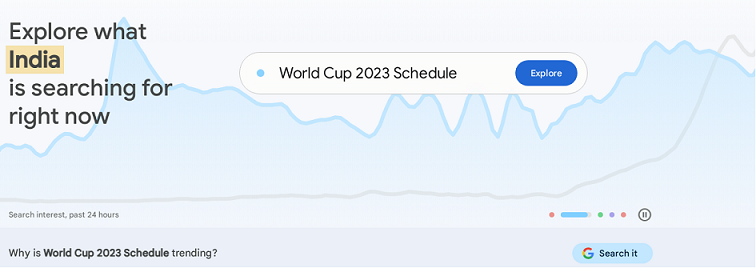
Have you ever wondered why some websites secure top positions in search results while others are lost in the digital landscape?
Well, it’s all about content optimization.
If you want to increase your online visibility & attract more visitors to your site, content optimization is the way to go.
Yes, you’ve heard right!
There are more than 1 billion websites out there on the internet.
The competition is fierce.
How to optimize your content so that it appears at the top of search results?
How to rank higher? Worry no more.
This guide explores 7 essential strategies to help you rank your content like a pro. We’ll make things easy for you to understand so you can take full advantage of this guide.
1. Understand your audience
Before diving into the writing phase blindly, you need to know who you are writing for.
It’s the first step in creating content that resonates & ranks well.
How to get to know your audience?
It’s simpler than you think.
• Create audience personas
The audience/buyer persona is a fictional character that represents your ideal readers. Here, you need to know their challenges, goals, interests, age, demographics, & what they are looking for.
Get a sneak peek into this buyer persona.
| Persona name | Jack Wilson |
| Age | 30 years |
| Occupation | Software Developer |
| Interests | Coding tutorials, productivity hacks, latest tech trends |
| Challenges | Staying updated with the latest technological trends |
This way, you can create a buyer persona for your target readers.
End results?
You’ll be able to create engaging content that speaks directly to their needs & desires.
• Use Analytics tools
Google Analytics & other tools can provide insights into who’s visiting your website, what content appeals to them, & how they interact with it.
Accordingly, you can look for patterns & adjust your content strategy as per their requirements.
2. Make content easy to read

Provide value to your readers by writing content that’s easy to read & scan.
The easier your content is to read, the better your audience will understand it.
Respond to this question:
Would you like to read a page filled with walls of text or content that is formatted properly with H1, H2, & H3 & contains short paragraphs?
Which one would you prefer?
The second one.
Am I correct?
With that in mind, you need to format your content properly & respond to all the queries your readers have in their minds in the simplest way possible.
How to optimize your text for readability?
- Add plenty of headings & subheadings to your content. (Note: The text should be easy to scan.)
- Use bullet points to provide readers with the best experience.
- Identify all long paragraphs. Break them into shorter ones. Try to convey a single idea in one sentence.
3. Optimize your content for SEO

Adding appropriate keywords to your copy indicates that you’ve covered the topic comprehensively.
What is the best place to include keywords?
Honestly speaking, you should place keywords naturally where there is a perfect fit for them.
However, there are some key areas you need to target.
- Insert the main keyword in your title.
- Don’t forget to add a keyword to the first paragraph of your article or blog post.
- Incorporate it in H2 & H3. It’ll help Google crawlers understand the structure of your content.
- Throughout the body of content without stuffing.
4. Make your language more straightforward
You need to make your writing more accessible to readers.
People don’t have time to use dictionaries to find the meanings of complicated words.
Use simple language because it gets your message across clearly. This way, readers will be able to grab your point clearly.
So, you should paraphrase tricky sentences with simpler ones.
An online paraphrase tool can be a great asset for simplifying your language & making it more straightforward. By using such a tool, you can reword complicated sentences into clearer & more concise versions without changing the intended meaning.
This can be highly beneficial when you want to communicate your message clearly.
5. Create compelling titles & Meta descriptions
Do you know that your meta title & description are the first things users see in search results?
Yes, they are.
Therefore, you should make them count.
Write them in a compelling manner & include your target keyword in them. Here are some valuable tips for titles:
· Incorporate numbers
For example a blog post title “Tips for Writing a Winning Blog Post “is not very engaging. You can make it more engaging by incorporating numbers like the title “5 Untold Tips for Writing a Winning Blog Post”
· Use powerful words
To make your title more enticing use words like “Must-Have,” Ultimate,” “Proven,” & “Killer”. So, use them.
· Keep it concise
Aim for less than 60 characters. This way, it will be displayed fully in search results.
Meta descriptions, on the other hand, should provide a brief summary of your content. Incorporate the main keyword in it.
Aim for 150-160 characters & make sure the description is captivating so that readers click through to your site.
6. Add a human touch to your content

Content that feels robotic can struggle to grab attention.
A human touch, such as a conversational tone or a relatable story, can make your content more engaging.
Readers are more likely to go through the content that connects with them on a deeper level.
AI writing tools have made waves in the digital landscape. Writers are relying heavily on these tools to generate content.
The downside of these tools is that their generated content often lacks empathy. Therefore, they sound more robotic.
When it comes to humanizing AI content to sound more authentic & relatable, a text humanize AI tool can work wonders. By benefiting from such a tool, you can inject a sense of personality into the content.
The tool adds emotions & variations in tone that mimic human speech patterns to enhance the quality & readability of the text.
7. Add premium-quality images
Sometimes, images can convey information that can’t be communicated with words.
Considering this, you should include relevant images that support the content. Avoid including poor-quality images.
Visually appealing images can enhance the aesthetics of your content & make it look more professional & polished. This builds trust with your audience.
Images increase the visibility of your content in image search results. And ultimately, they drive more organic traffic to your site.
Bottom Lines
Optimizing your content to rank higher on search engines is a multifaceted process. It involves understanding your audience, making your content easy to read, optimizing it for search engines, writing in clear language, writing irresistible titles & descriptions, adding a human touch to AI-generated text, & including relevant images.
It takes time & consistent efforts to see the desired results.
By implementing 7 tips mentioned in this guide, you will be on your way to improving your search ranking & driving traffic to your site. Best of luck!
Why wait?
Start optimizing your content today & watch your ranking skyrocket!






























